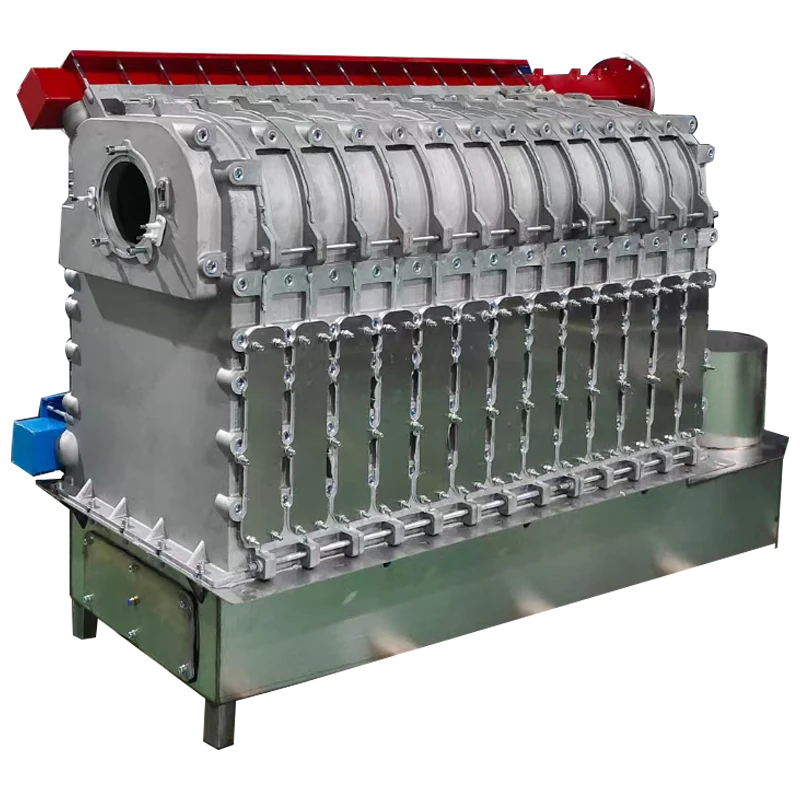ديسمبر . 20, 2024 09:36 Back to list
pouring cast iron
Pouring Cast Iron The Art and Science of Metalworking
Cast iron has long been revered as a versatile and durable material, vital in the realms of construction, automotive manufacturing, and various types of engineering. The process of pouring cast iron is fundamental to its production, embodying both artistry and precision in metalworking.
Understanding Cast Iron
Cast iron is an alloy primarily composed of iron, carbon, and silicon. With a carbon content of more than 2%, it distinguishes itself from wrought iron, which has significantly lower carbon levels. The high carbon content in cast iron grants it unique properties, such as excellent castability and exceptional wear resistance. This makes it suitable for a myriad of applications, from kitchen cookware to engine blocks.
The Pouring Process
The journey of pouring cast iron begins in a foundry, where raw materials are melted in a furnace. Typically, the alloy consists of pig iron, scrap iron, and various alloying elements that enhance its properties. The melting process requires heating the materials to temperatures around 1200 to 1400 degrees Celsius (approximately 2200 to 2550 degrees Fahrenheit).
Once the iron reaches a molten state, it’s time to pour. This critical step requires careful planning and execution. The molten iron is transferred from the furnace to the pouring ladle, which must be designed to withstand high temperatures and control the flow of molten metal accurately. Proper pouring techniques are essential to avoid defects like incomplete filling, air pockets, and unwanted oxidization.
Mold Preparation
Before pouring, molds are meticulously prepared. These molds can be made from various materials, including sand, metal, or ceramic, depending on the intended application and desired finish. Sand molds are commonly used for general cast iron production due to their ease of creation and cost-effectiveness. They are made by compacting sand around a pattern that represents the final product.
pouring cast iron

The preparation of the mold is crucial; it must be carefully constructed and checked for any potential defects. Once ready, it is often treated with release agents to facilitate the extraction of the cast once it solidifies.
The Pouring Technique
Effective pouring requires skill and experience. The angle of the ladle, pouring speed, and distance from the mold all play significant roles in achieving high-quality cast iron. Pouring too quickly can lead to splashing, which may result in oxidation and contamination, while too slow a pour can cause premature solidification at the mouth of the mold, resulting in incomplete casting.
Maintaining the ideal pouring temperature is also vital. If the molten iron cools too much before reaching the mold, it could solidify unevenly, leading to flaws. Ideally, the pouring temperature should be monitored and adjusted as necessary to ensure the quality and integrity of the final product.
Cooling and Finishing
After the molten iron is poured into the molds, it is allowed to cool and solidify, a process that can take from a few hours to several days, depending on the size and thickness of the cast. Once the iron has cooled, the molds are removed, and the castings are subjected to various finishing processes, such as sandblasting, grinding, or machining, to achieve the desired specifications.
Conclusion
Pouring cast iron is a combination of art and science, requiring an understanding of materials, meticulous preparation, and skilled execution. As industries continue to evolve, the fundamental techniques of pouring cast iron remain critical to producing durable and reliable products. The craftsmanship involved in this process not only upholds age-old traditions but also paves the way for innovation in modern metalworking, ensuring that cast iron remains a cornerstone material for generations to come.
-
Durable Cast Steel Concrete Pipe Mold Bottom Rings & Base Trays
NewsAug.23,2025
-
Centrifugally Cast Iron Water Main Pipe for Reliable Mains
NewsAug.22,2025
-
Durable Centrifugally Cast Iron Water Main Pipe
NewsAug.11,2025
-
Centrifugally Cast Iron Water Main Pipes for Reliability
NewsAug.10,2025
-
High-Quality Centrifugally Cast Iron Water Main Pipes
NewsAug.09,2025
-
Durable Cast Iron Water Main Pipe & Drainage Solutions
NewsAug.08,2025


